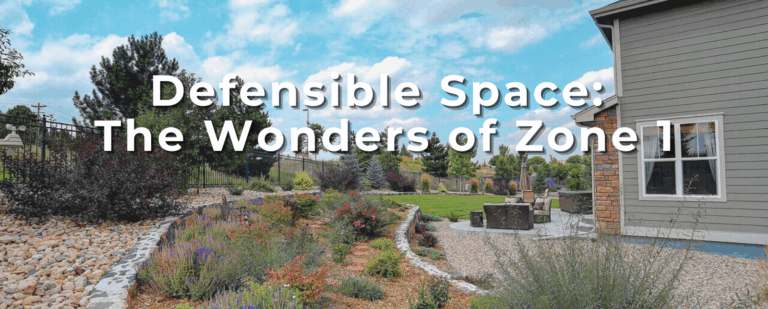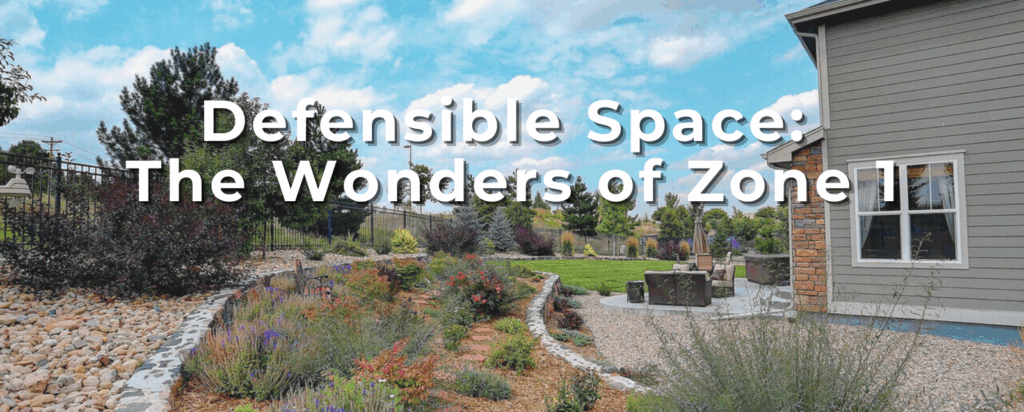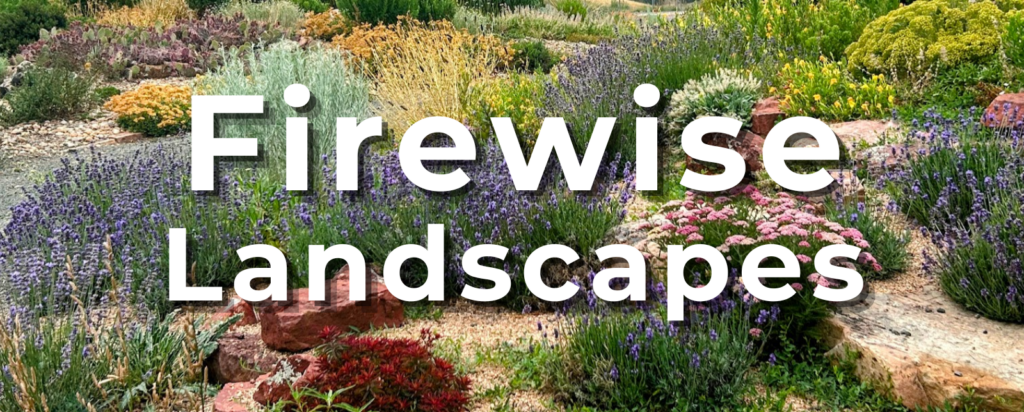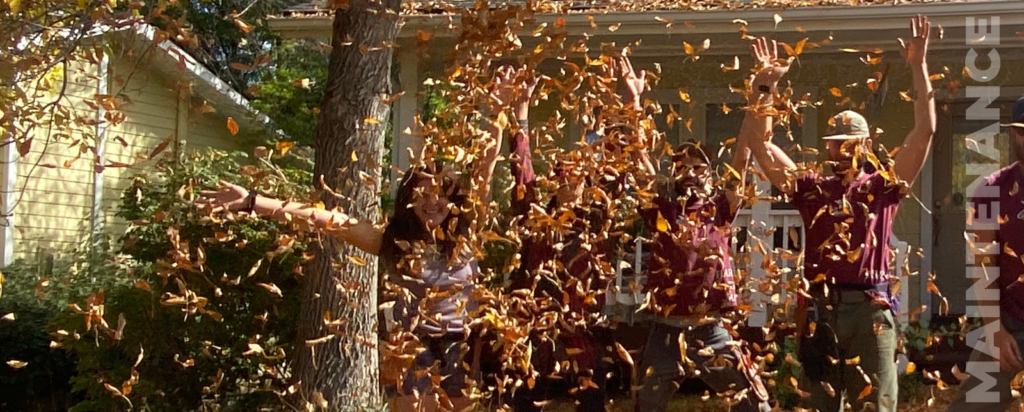In this third installment of our year-long series on firewise landscaping, we are going to define defensible space and go into some detail on zone 1, the nearest and dearest of the 3 zones.
Defensible space refers to the managed area immediately surrounding a home that makes the home more fire resistant, and more accessible to firefighters in the event of a wildfire. It is broken out into 3 distinct zones, which are concentric rings, starting with zone 1 closest to the home, extending 5 feet from it. Zone 2 goes from 5 feet of the home to 30 feet from it. Zone 3 covers the further reaches, from 30 to 100 feet and beyond.
A Holistic Look at Zone 1
Proper planning and management of the closest 5 feet around your home is essential to its safety in the event of a fire. We basically want nothing flammable here; no wood: trees, shrubs, or woody mulches. Inorganic gravel mulches are the name of the game. Think of the kindling you use to start a fire and how you don’t want that alongside the container that holds your life and all its belongings.
Good news! This actually works out really well from a design standpoint. For years I’ve been talking to clients about parting ways with their foundation plantings. I’ll recap the reasons here:
- It’s no bueno to water your foundation, especially in the Rocky Mountains where we have expansive clay soils; no plants = no need to water the base of your home. (Pro Tip: This is also why it’s important to direct your downspout at least 10 feet from your house.)
- You can’t see them from inside where you most likely spend most of your time, so foundation plantings become something you spend time, energy, and money on for the minute you’re coming home, and for your neighbors. Your time, energy, and money can be better spent.
- Foundation planting beds are often so narrow they look cramped and crowded up against the wall.
Rule of thumb: you should be able to walk between the wall and your plants at their mature size. Perfect then! Keep them out of zone 1 and put them in zone 2 or 3, see your lovely landscape plants you’ve toiled over, or paid someone else to, from inside your home through your windows. And guess what. Your neighbors will still see them! No curb appeal is sacrificed here.
Hopefully you no longer feel bad about being told you can’t have plants within the first 5 feet from your house and we can move on to the specifics of what to do there instead.
So let’s expand on the idea of being able to walk between your plantings and your house. If that’s something you’d like to be able to do for general access around your house, I think it’s a splendid idea. Why not? It’s clear of obstacles and laid with gravel. If you think you’ll be using zone 1 as a pathway, formal or informal, be sure to choose a gravel that provides good walkability. This means
- No cobble/river rock. It’s great for capturing organic matter from the wind which will be a fertile place for seeds to settle and grow a bunch of weeds that really can’t be weeded with hand tools, so chemical pesticides are your option. And cleaning that stuff out when it engulfs the cobble is not a job I would ask of my worst enemy (well ok, maybe I would). And cobble is an ankle buster. In my opinion the only thing cobble is good for is being in a river. Period.
- No pea gravel. It’s less terrible because you can hand weed it, but being roundy, it never settles so it is always like mushing through sand. You deserve better.
Angular gravel is the way to go. One inch size gravel at three inches deep packs down nicely to make a good walking surface and knits together in such a way that organic matter, including seeds, are not readily captured. And hand weeding is much more feasible. And it looks tidier overall. You have some options. Grey is significantly more economical, but has an industrial look belonging to driveways and parking lots, in my opinion. There are some really great subtle colors that look more natural and can tie in with the colors of your home including a soft brown, natural plum (think Durango’s Purple Cliffs), and a subdued salmon.
Another benefit is that this 5 foot swath of gravel is a good splash guard so rain coming off the roof doesn’t pummel the plants in a foundation planting, or splash mud on the house as it would if it were bare soil.
In summary, the theme of Defensible Space Zone 1 is less is more and there are a lot of reasons to feel good about it. The less you have in Zone 1, the better off you are; this includes fallen leaves, pine needles, wood fences, and even those nice natural fiber doormats. As a designer and Permaculturist I am all about stacking functions, making elements serve more than one purpose. That’s where the zone 1 gravel path idea comes in. It’s a good use for empty space.
Stay tuned the next two months to learn about the ins and outs of zones 2 and 3.
To the Glory of the Garden,
President, Columbine Landscapes Co.









